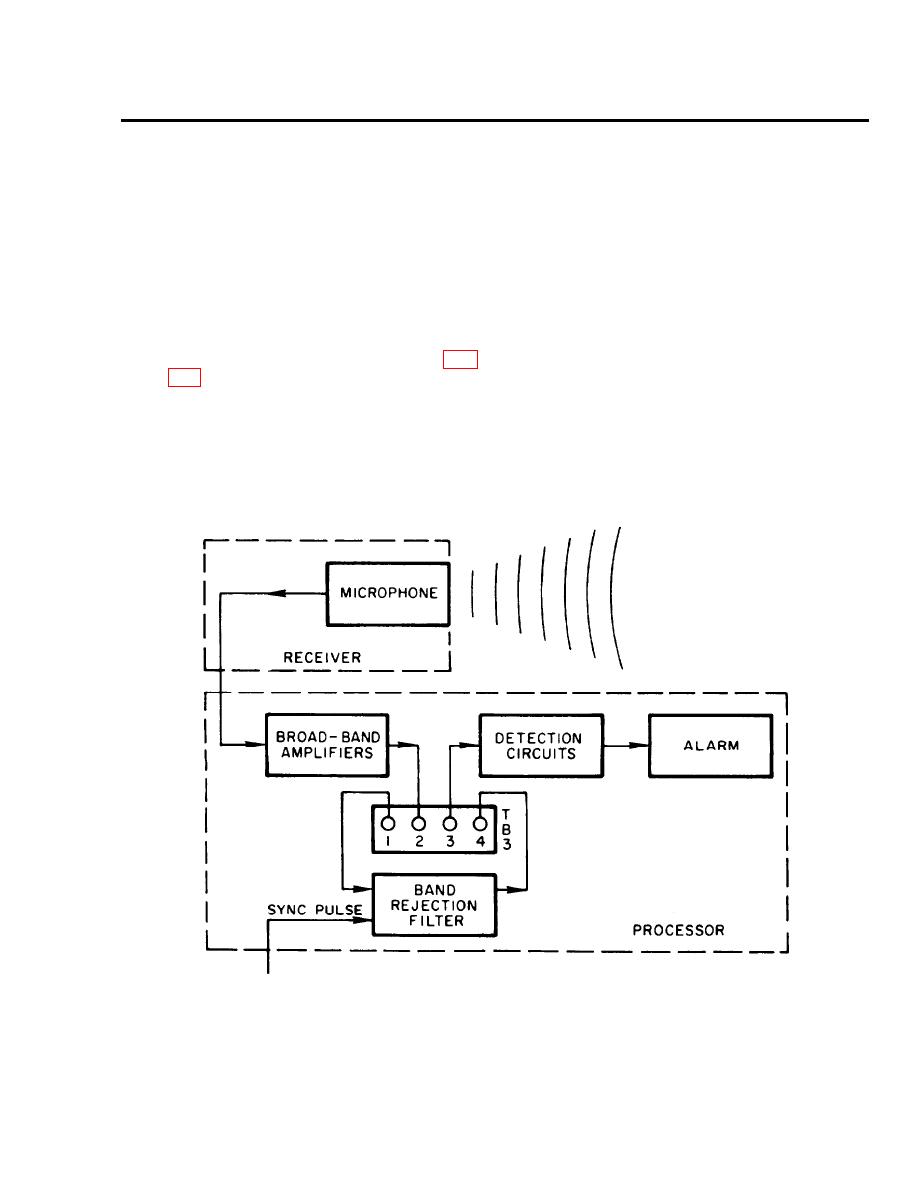 |
|||
|
|
|||
|
Page Title:
CHAPTER 6 FUNCTIONING OF EQUIPMENT |
|
||
| ||||||||||
|
|
 CHAPTER 6
FUNCTIONING OF EQUIPMENT
SIMPLIFIED FUNCTIONAL OPERATION
Section I.
6-1. General
sounds received by the receiver are amplified by
The processor/receiver ultrasonic passive signal
broad-band amplifiers (three amplifiers stagger
senses high frequency sounds in the range of 20 kHz
tuned) in the processor. The output from the
to 30 kHz. These sounds are produced during forced
broad-band amplifiers can be coupled directly to the
penetration by sawing, hammering, and burning by
detection circuits when a processor/transceiver
torch through metal, masonry walls, doors, metal
ultrasonic motion signal is not operating in the same
mesh, bars, shuttered windows, ventilation open-
area or coupled through the band rejection filter
ings, etc. The equipment is insensitive to sounds
when operating in conjunction with a
generated below 20 kHz and above 30 kHz.
processor/transceiver ultrasonic motion signal and a
synchronizing pulse is provided. Terminal board TB3
6-2. Simplified Functional Operation (fig.
provides a convenient means of connecting or
bypassing the band rejection filter from the operat-
a. T h e p r o c e s s o r / r e c e i v e r u l t r a s o n i c p a s s i v e
ing circuit.
signal contains a processor which processes data
NOTE
from the receivers. Each receiver enclosure contains
The processor will not operate correctly if the band
a microphone which has a flat response between 20
rejection filter is incorporated in the circuit without a
kHz and 30 kHz (ultrasonic range). Ultrasonic
synchronizing pulse input.
FROM PROCESSOR/TRANSCEIVER
ULTRASONIC MOTION SIGNAL
ME 6350-262-14/2/6-1
Figure 6-1. Processor/receiver ultrasonic passive-simplified block diagram.
6-1
|
|
Privacy Statement - Press Release - Copyright Information. - Contact Us |